#masashi tsuboyama
Text
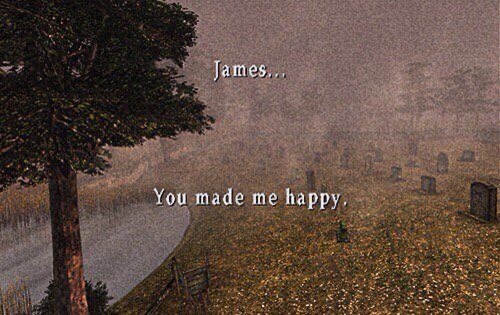

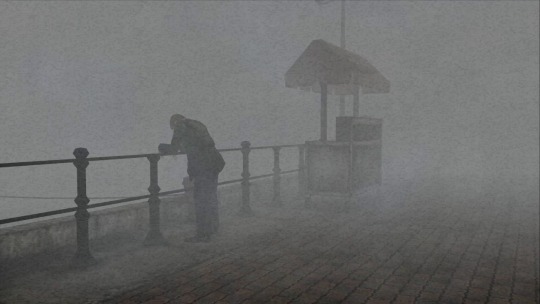



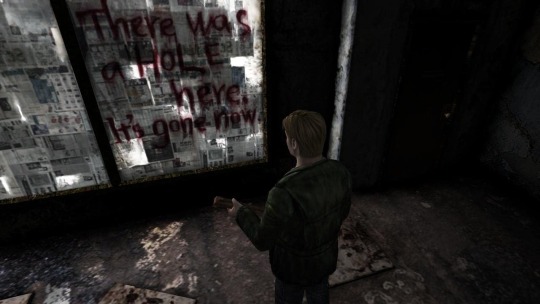
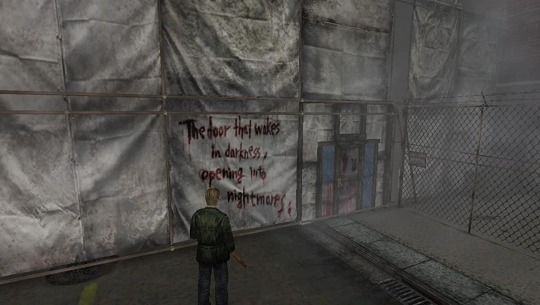


SILENT HILL 2 (2001)
#2001hz#01hz#2001hz archive#y2k#y2k aesthetic#silent hill#silent hill 2#2001#konami#hiroyuki owaku#masashi tsuboyama#team silent#japan#survial#horror
1K notes
·
View notes
Text

Silent hill 2, Dir. Masashi Tsuboyama (2001)
186 notes
·
View notes
Text
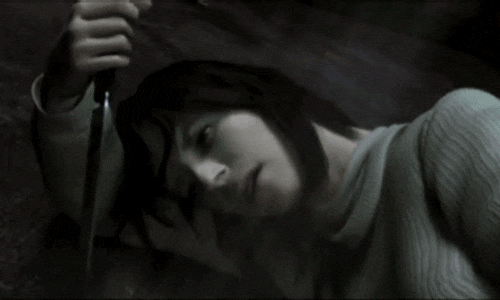


Silent Hill 2 (2001) . Masashi Tsuboyama
21 notes
·
View notes
Text

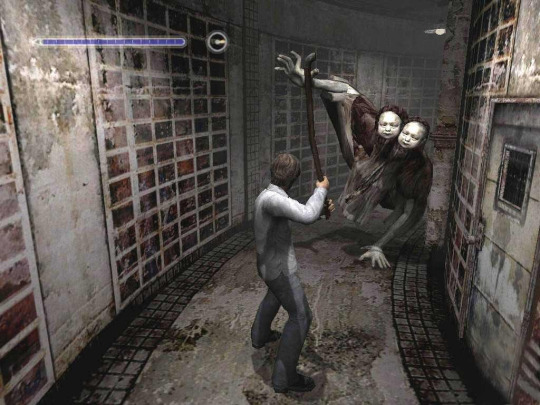

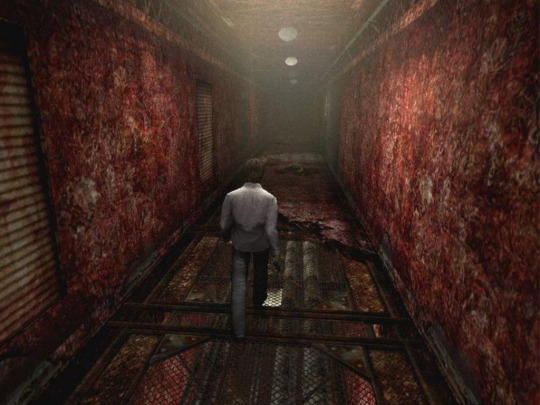
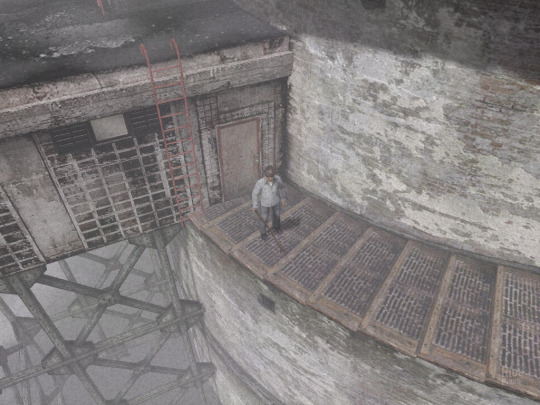

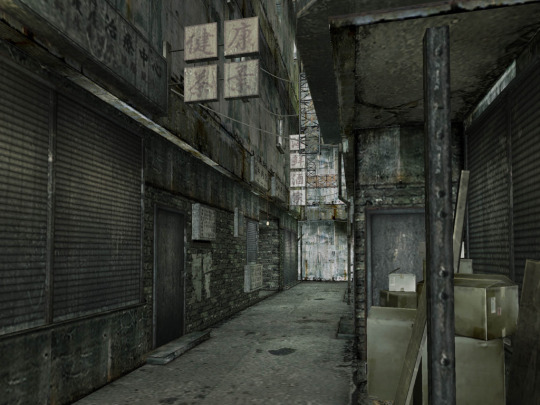


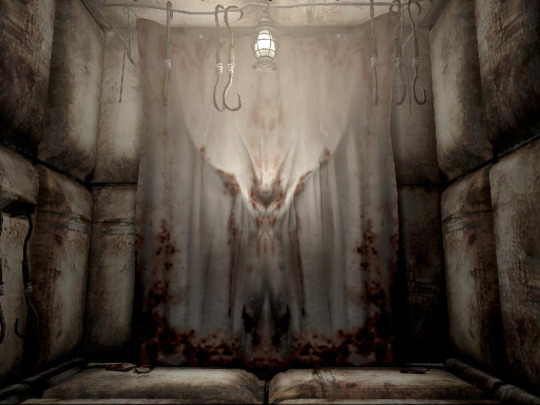


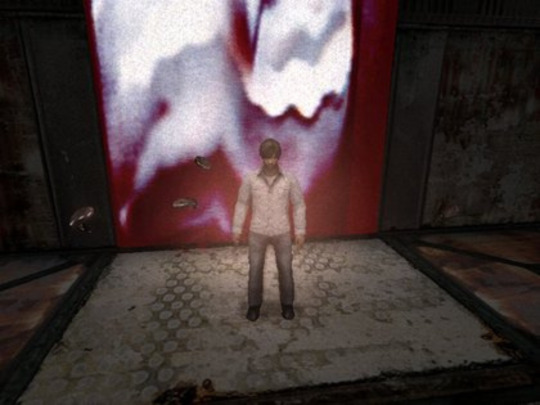
Voilà une première publication pour parler des œuvres dont la direction artistique m'inspire.
J'ai choisi pour celle-ci le jeu "Silent Hill 4: The Room", originellement sorti en 2004 sur PlayStation 2. On y trouve un style associant l'industriel avec de légères touches de brutalisme, et une approche du genre horrifique à la fois symbolique, grotesque et onirique (souvent typique du "J-Horror").
Compte tenu du fait que cette DA fonctionne en grande partie grâce à la manière dont les niveaux sont construits et structurés (le level design est excellent au passage), c'est assez difficile de la représenter convenablement à travers des screenshots.
Car en effet, jouer à SH4 revient à se plonger dans une architecture disjointe, échappant à la notion du temps et aux agencements traditionnels de l'espace. Un trait cohérent avec le récit mis en scène, puisque ce dernier nous fait explorer des mondes parallèles définis par la psyché du tueur en série Walter Sullivan, l'antagoniste dérangé de ce quatrième opus.
J'apprécie beaucoup ce qu'ont accompli Masashi Tsuboyama et Team Silent avec les visuels de ce titre, notamment pour "l'inquiétante étrangeté" que créé ce mélange entre des textures familières et une atmosphère générale surréaliste, mais aussi pour la profondeur/richesse narrative de cette esthétique (une qualité commune aux quatre premiers opus de la saga). Sans oublier la prouesse artistique et technique qu'est d'accomplir leur vision malgré les limitations de l'époque.
#jeux vidéo#video games#art direction#art#silent hill#horror#horror games#horror genre#japanese horror#surrealism#horreur
11 notes
·
View notes
Text
SH4 - The Nature of the Game's Monsters and Ghosts
Masashi Tsuboyama, director of SH2 and art director of 4, explains in the game's website the nature of the game's monsters and ghosts. According to him, creatures are residues of the creation of Walter's Otherworlds that have come to life. He says SH4's creatures have sexes, consciousness, feed and breed like any other animal. Meanwhile, ghosts are in eternal suffering, unable to truly die in the Otherworld. This has turned them hostile in their need to escape it.

Translation:
CREATURES
Their role in the game is to be "enemies", but I think of them more as refuse created from vague bits of consciousness or memory trying to take form, which then evolve within the environment into which they were created. Suppose you have a lump of clay and you sculpt a castle out of it. The excess clay carved off of that would form the creatures. The creatures fit into the environment created by the killer, but they have no malice toward the protagonist. The creatures have gender, consciousness, and the ability to reproduce. This is thinking about them as more than just visuals, but really considering their existence as a whole.
GHOSTS
Victims wandering in the otherworld are denied true "death" and are forced to suffer eternal pain. We tend to focus on that intense visual in the ancient Japanese worldview, but true horror is not being able to die no matter how much you suffer. For these ghosts, the otherworld must have been a truly terrible hell. The desire to get out of the otherworld must be what drove them to attack the protagonist, as he is still alive. The way they struggle helplessly when pinned down by the sword is a unique way to express the idea of a ghost that can never die.
2 notes
·
View notes
Photo

M A S A S H I T S U B O Y A M A :
- background designer for Silent Hill, director of Silent Hill 2, art director of Silent Hill 4
2 notes
·
View notes
Photo

“ Abstract Daddy “ from Silent Hill 2 by Masashiro Ito
40 notes
·
View notes
Text
Wiki Targeted (Games)
02:05
There are various Silent Hill projects, including comics and games, that were cancelled by Konami or evolved into other projects.
Silent Hill (Com.X graphic novel)
Advertisement in a European product catalogue.Initially planned for release in November 1999 from publisher Com.X, a 70-page original graphic novel adaptation of the original game (ISBN:978-1903286005) was written by Jon Murphy and penciled by Neil Googe.[1] Com.X founder Eddie Deighton explained in 2008:
Neil originally came for an interview as a designer at the design agency Russell and myself ran, but as soon as we saw in his portfolio that Neil had trained as a comic artist and had worked on 2000AD, we ended up talking for about 4 hours about comics and the industry in general. By the time we finished, we felt that Neil's talent would have gone to waste if we'd taken him on as a designer, so we decided instead to propose to our client, Konami, that we should work with Neil on a graphic novel for the computer game Silent Hill. They felt it would be a cool thing to do, so Neil came on board and we began developing the project. Very quickly, we found that we all got on really well and by about the third week of working together, we felt we had a lot to contribute to the comic industry in terms of enthusiasm and creativity.
[2]
Googe was assigned six months to finished the full colour art for the graphic novel. Although it was completed and an advertisement was featured in a European catalogue, the adaptation was never released by Konami. He took an experimental approach to the comic layout, but because of his inexperience and lack of planning at the time, felt that not everything he tried worked.[3] In May 2021, he explained in an email that the comic had been lost over time and alledged that (to the best of his memory) it was cancelled due to inter-company politics:
Sadly that particular project has suffered the problem of so much older digital work. Stored on CDs and those CDs being lost over the years.
The project was indeed finished. As for why it was never released... It was a long time ago now, but I will outline the basics of what I remember. Konami, as a company is broken down in to regional companies. We were commissioned by Konami europe (I believe) to produce the comic as promotional material for silent hill 2. It was going to be published separately and in a special edition of the game. Konami japan also wanted to use the comic. Konami europe, who had paid for the project, wanted some sort of payment for that use, from konami Japan. Konami Japan refused to pay any kind of fee. So Konami Europe said they couldn't use it. At which point Konami Japan, who technically own all copyrights on silent hill, then blocked europe from releasing the book under usage rights, not geting proper permission, etc. etc. And so... it was shelved.
Now as I say, this is just my understanding of what happened from what I remember of a 20 year old project. I wasn't involved in any of those discussions or politics... I was just a guy hired to do a book.
[4][5]
Silent Hill 3 (Scrapped) and Silent Hill 5
Despite its daylight setting, Silent Hill 5 would have had the darkest tone in the series, going back to the psychological roots of the second game.The original plans for Silent Hill 3 were much different than what was released. The story would have continued the "inner fears" concept used for James Sunderland, Angela Orosco, and Eddie Dombrowski in Silent Hill 2. However, Konami was not pleased with the slow sales of Silent Hill 2 and pushed Team Silent to turn the game into a more commercial arcade-style rail shooter spin-off (not to be confused with the later-released Silent Hill: The Arcade). This plan was rejected by the team, but the process wasted much of the budget and development time for Silent Hill 3.[6][7][8][9]Silent Hill 2 was also criticised on the internet at the time for not focusing on Alessa Gillespie and not having the same art style, characters, and creatures as the first game.[10][11] As a result, Team Silent did not immediately move forward with their original Silent Hill 3 plans, instead opting to conclude the Alessa story from the original Silent Hill and tie up loose ends to appease fans. Not every Team Silent member agreed with this decision, though Akihiro Imamura stated that they also did not want to use a similar template for two games in a row.[12]
Masashi Tsuboyama stated in 2004 that development had begun on Silent Hill 5, but denied rumours that the game would be titled "Shadows".[13] After the release of Silent Hill 4: The Room, Team Silent began re-purposing their Silent Hill 3 plans for Silent Hill 5. Because of the underwhelming response to Silent Hill 4, Imamura wanted a strong fifth installment. The game would not follow the same gameplay style as Silent Hill 4 and would have had less melee combat and a more dramatic Otherworld that takes advantage of PlayStation 3 generation consoles. The plot of Silent Hill 5 (and previously Silent Hill 3) would have focused on a damaged human being summoned to Silent Hill, Maine for a very specific reason, described by Akira Yamaoka as "the darkest story we have come up with". Imamura speculated that some things would have to be cut to get passed the ratings system.[12]
In contrast to the previous games in the series, Silent Hill 5 would have started off in Silent Hill as an everyday town with people going about their daily lives, which would slowly rot away as the game progresses. Taking inspiration from Texas Chain Saw Massacre and Jacob's Ladder, the game would have innovated the series with a brand new concept for daylight horror through a creepy sunny Otherworld, playing with the idea of how light interacts with darkness (rather than focusing on horror obscured by fog and shadows). It would have gone back to Silent Hill 2's psychological roots.[12][14][15][16][17][18]
1 note
·
View note
Text
Fascinating History: The Director Of The Original ‘Silent Hill 2’ Just Revealed That The Game’s Iconic Fog Was A Workaround To Hide All The ‘Dilbert’ Strips They Couldn’t License

We thought we already knew everything there was to know about the critically acclaimed Silent Hill series, but looks like we were wrong. Director Masashi Tsuboyama recently sat down with OGN and shared some fascinating history about developing the survival horror masterpiece, including the fact that the iconic fog was…
Read more...
0 notes
Text
Fascinating History: The Director Of The Original ‘Silent Hill 2’ Just Revealed That The Game’s Iconic Fog Was A Workaround To Hide All The ‘Dilbert’ Strips They Couldn’t License

We thought we already knew everything there was to know about the critically acclaimed Silent Hill series, but looks like we were wrong. Director Masashi Tsuboyama recently sat down with OGN and shared some fascinating history about developing the survival horror masterpiece, including the fact that the iconic fog was…
Read more...
0 notes
Text
Fascinating History: The Director Of The Original ‘Silent Hill 2’ Just Revealed That The Game’s Iconic Fog Was A Workaround To Hide All The ‘Dilbert’ Strips They Couldn’t License

We thought we already knew everything there was to know about the critically acclaimed Silent Hill series, but looks like we were wrong. Director Masashi Tsuboyama recently sat down with OGN and shared some fascinating history about developing the survival horror masterpiece, including the fact that the iconic fog was…
Read more...
0 notes
Text
Fascinating History: The Director Of The Original ‘Silent Hill 2’ Just Revealed That The Game’s Iconic Fog Was A Workaround To Hide All The ‘Dilbert’ Strips They Couldn’t License
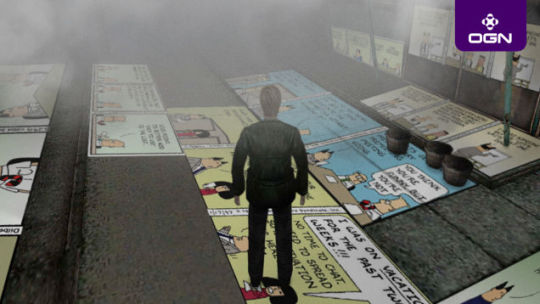
We thought we already knew everything there was to know about the critically acclaimed Silent Hill series, but looks like we were wrong. Director Masashi Tsuboyama recently sat down with OGN and shared some fascinating history about developing the survival horror masterpiece, including the fact that the iconic fog was…
Read more...
0 notes
Text
Fascinating History: The Director Of The Original ‘Silent Hill 2’ Just Revealed That The Game’s Iconic Fog Was A Workaround To Hide All The ‘Dilbert’ Strips They Couldn’t License
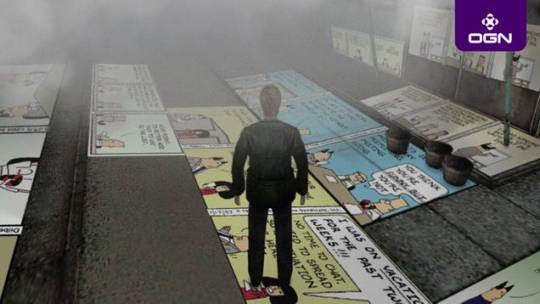
We thought we already knew everything there was to know about the critically acclaimed Silent Hill series, but looks like we were wrong. Director Masashi Tsuboyama recently sat down with OGN and shared some fascinating history about developing the survival horror masterpiece, including the fact that the iconic fog was…
Read more...
0 notes
Text
Fascinating History: The Director Of The Original ‘Silent Hill 2’ Just Revealed That The Game’s Iconic Fog Was A Workaround To Hide All The ‘Dilbert’ Strips They Couldn’t License
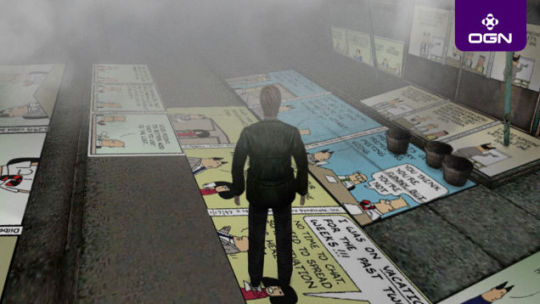
We thought we already knew everything there was to know about the critically acclaimed Silent Hill series, but looks like we were wrong. Director Masashi Tsuboyama recently sat down with OGN and shared some fascinating history about developing the survival horror masterpiece, including the fact that the iconic fog was…
Read more...
0 notes
Text
Fascinating History: The Director Of The Original ‘Silent Hill 2’ Just Revealed That The Game’s Iconic Fog Was A Workaround To Hide All The ‘Dilbert’ Strips They Couldn’t License

We thought we already knew everything there was to know about the critically acclaimed Silent Hill series, but looks like we were wrong. Director Masashi Tsuboyama recently sat down with OGN and shared some fascinating history about developing the survival horror masterpiece, including the fact that the iconic fog was…
Read more...
0 notes